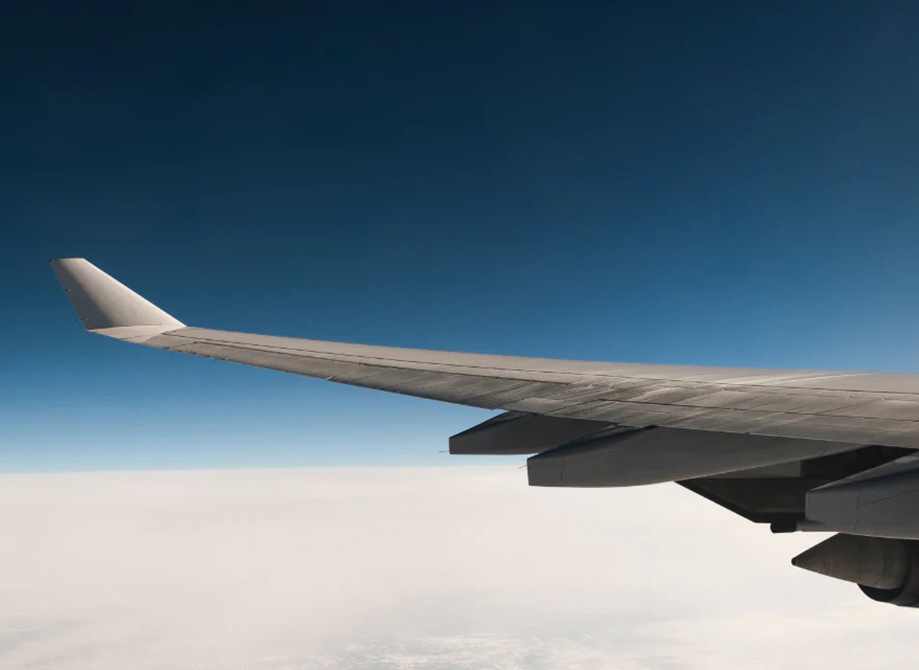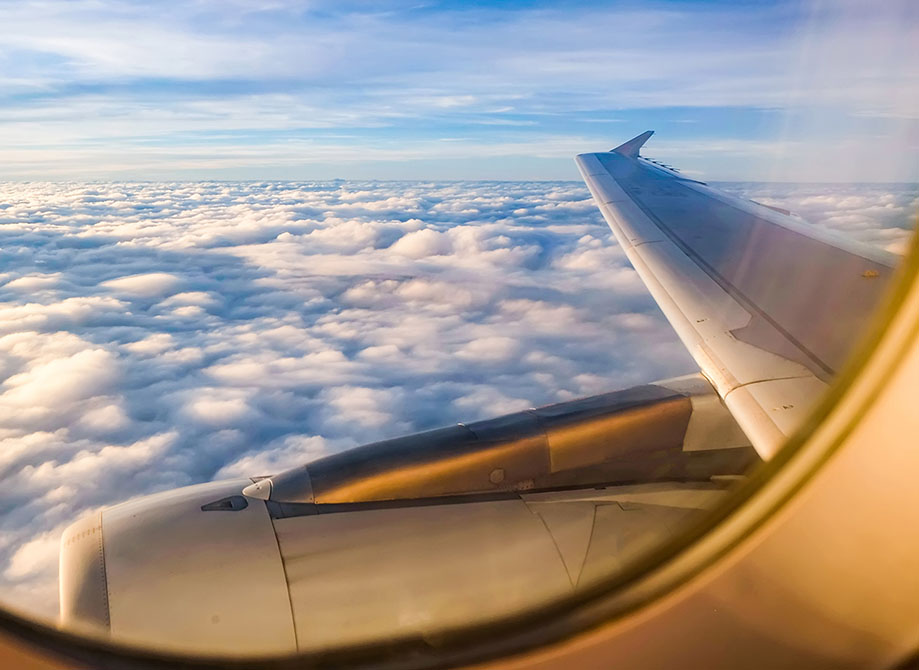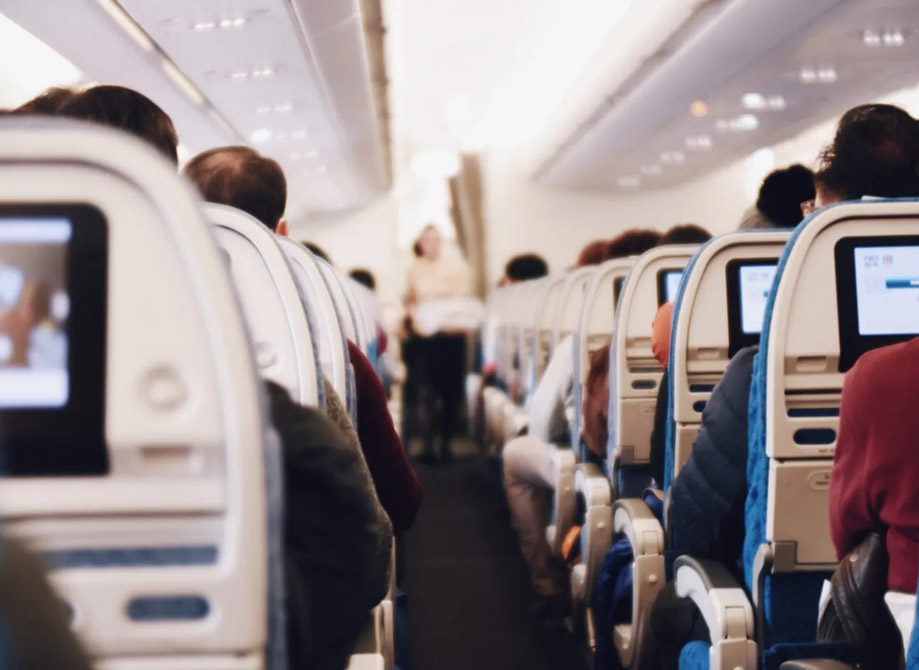
Flying long-haul, especially on a red-eye flight, is never glamorous. But when the destination is Iceland — a land of glaciers, volcanoes, and surreal northern skies — I knew the journey would be worth it. That didn’t stop me from dreading the flight itself. I had booked a late-night departure, knowing I’d arrive in Reykjavík early in the morning, which sounded efficient in theory. In practice? It meant sleeping upright in economy and arriving puffy-eyed and dazed.
Still, I made it work. In this article, I’ll share the strategies I used before, during, and after my red-eye flight to Iceland — all of which helped me not only survive the journey but actually enjoy my first day there without crashing. These tips are based on personal trial and error, not theory, and they’re especially useful if you’re flying to Iceland from North America or Asia and dealing with multiple time zones.
1. Choose the Right Seat — Your Flight Experience Begins Here
Let’s be honest: the seat you choose can make or break a red-eye flight. I always try to snag a window seat — not just for the view, but because I can lean against the wall and have fewer interruptions from fellow passengers. For this trip, I managed to get a window seat in the second-to-last row. It wasn’t the most popular section of the plane, which worked to my advantage. Fewer people, fewer disturbances.
If you can swing it, pay a little extra for an economy seat with extra legroom, or even better, a premium economy ticket. Trust me — your future self will thank you when your knees aren’t jammed against a tray table for six hours.

2. I Swear by the “Pre-Sleep” Strategy
One mistake I used to make on red-eye flights was boarding the plane completely exhausted, thinking I’d fall asleep right away. That never worked. Now, I follow a “pre-sleep” strategy: I sleep for an hour or two at home before heading to the airport. This way, I’m not overtired or wired with adrenaline.
On this trip to Iceland, I took a quick nap before my late-night flight. By the time I boarded, my body was relaxed but not desperate for sleep, which made it easier to ease into the flight. I didn’t fall asleep immediately, but when I did, it was restful enough to function the next day.
3. My In-Flight Essentials Kit
My backpack is practically a survival kit. Here’s what I always bring on a red-eye flight — and what helped me immensely on the way to Iceland:
- Neck pillow: I use one with memory foam and a chin support, so my head doesn’t bob like a dashboard toy.
- Noise-canceling headphones: A game changer. I put on ambient sounds or white noise and block out crying babies and clinking carts.
- Eye mask: Total darkness helps me mentally trick my brain into thinking it’s bedtime.
- Compression socks: These help with circulation and prevent that heavy-leg feeling upon landing.
- Hydrating mist and lip balm: Planes are moisture-zapping. I spritz my face and reapply balm frequently.
- Water bottle: I always fill up after security and sip throughout the flight. Hydration = less jet lag.
Bonus tip: I skip caffeine entirely before and during a red-eye. As much as I love coffee, I’ve learned the hard way that it just delays sleep and dehydrates me.
4. Meal Timing — Don’t Follow the Airline’s Schedule
On red-eye flights, airlines often serve a meal right after takeoff, which feels disruptive if you’re trying to fall asleep. On my Iceland flight, I politely declined the meal service and instead ate something light before boarding — a salad and some soup at the airport. That way, my digestion wasn’t in overdrive mid-flight, and I could relax sooner.
When breakfast was offered just before landing, I only took fruit and tea. Heavy airplane breakfasts never sit well with me after a night of poor sleep, and I didn’t want to feel bloated as I landed in one of the most beautiful countries in the world.
5. Stretching and Gentle Movement — Even in a Tiny Aisle
One of my biggest lessons from long-haul flying is the importance of movement. Every two hours or so, I stood up, walked a bit, and stretched — even if it was just in my cramped seat area. On the flight to Iceland, I did simple calf raises and ankle rolls while standing by the bathroom. It wasn’t much, but it made a noticeable difference in how my body felt when I got off the plane.
Also, I always remove my shoes in flight (with socks, of course), which helps my feet relax. Just make sure you’re not that person — keep your feet tidy and respectful.
6. Arrival Ritual: How I Reset Myself Post-Flight
Landing in Iceland, I knew I had a full day ahead. I had planned a walking tour of Reykjavík and a late afternoon dip in a thermal pool — no time to crash. Here’s what helped me stay energized:
- Cold air + fresh water: Iceland’s crisp morning air is invigorating. I stepped outside the airport and instantly felt refreshed.
- Breakfast with protein and fat: I avoided sugary foods and instead had eggs, toast, and skyr (Icelandic yogurt). This gave me steady energy.
- Natural light exposure: Even if it’s cloudy, being outdoors helps regulate your internal clock. I walked around as much as possible.
- Avoid naps: It’s tempting, I know. But I pushed through until 9pm local time, and it paid off — I slept like a rock that night and woke up completely adjusted.
7. Jet Lag: Prevention Over Cure
I’ve traveled enough to know that jet lag isn’t just about changing time zones — it’s about how well you prepare. I start adjusting my sleep schedule a couple of days before the trip, going to bed and waking up an hour earlier or later depending on the destination.
En route to Iceland, I wore a smartwatch that tracks my sleep and heart rate. It also nudged me to breathe deeply and stay calm, which helped with anxiety. I even used a meditation app during the flight. Five minutes of focused breathing before trying to sleep made a big difference.

8. Mindset Matters — Don’t Fight the Flight
Here’s something unexpected: when I finally stopped seeing the flight as a chore and started treating it as part of the adventure, things shifted. I loaded up some Icelandic music, watched a documentary about glaciers, and let my mind wander. There’s something magical about flying toward the unknown, and Iceland — with all its mystery and raw nature — makes the journey feel poetic.
Was the flight comfortable? Not really. But with the right mindset and some preparation, it became more manageable, even meaningful.
It’s Not Just About Getting There
Traveling to Iceland was one of the most breathtaking experiences of my life — a journey filled with surreal landscapes, steaming geothermal pools, and otherworldly silence that made me feel both tiny and completely alive. But the adventure didn’t start with a scenic view or a glacier hike. It started with a red-eye flight — the kind that has the potential to derail even the best-laid travel plans.
I didn’t fly first class. I wasn’t greeted with champagne or a lie-flat seat. I’m not a luxury traveler, and I rely on economy flights just like most people. What made the difference wasn’t how I flew, but how I prepared. A few simple but intentional choices — like packing essentials for comfort, adjusting my body clock in advance, and staying mindful about hydration and food — made that uncomfortable, cramped flight a manageable and even productive part of the trip. I didn’t step off the plane feeling defeated. I stepped off energized, if slightly groggy, and ready to explore.
What surprised me most was how much mindset played a role. Once I stopped resisting the inconvenience and accepted the flight as part of the journey — not just a means to an end — I felt more in control. Instead of anxiously counting the hours or scrolling endlessly through inflight movies, I listened to calm music, reflected on what I was heading toward, and even journaled for a bit. That small mental shift changed everything.
If you’re planning a long-haul flight to Iceland, don’t fear the red-eye. Embrace it. Pack smart. Sleep smart. Hydrate like a maniac. Stretch, breathe, and take care of yourself midair like you would at home. Think of the flight not as a hurdle, but as your gateway into a once-in-a-lifetime experience. And when you land — whether it’s into icy winds, thick clouds, or crystal-clear skies — pause. Take a deep breath. Look around.
That first glimpse of Reykjavík in the early morning light, with the soft hues of dawn reflecting off snow-dusted rooftops and the crisp, invigorating air hitting your face — it will remind you why you made the effort. And you’ll know, deep down, that it wasn’t just about getting there.
It was about arriving fully present — and ready for something extraordinary.


